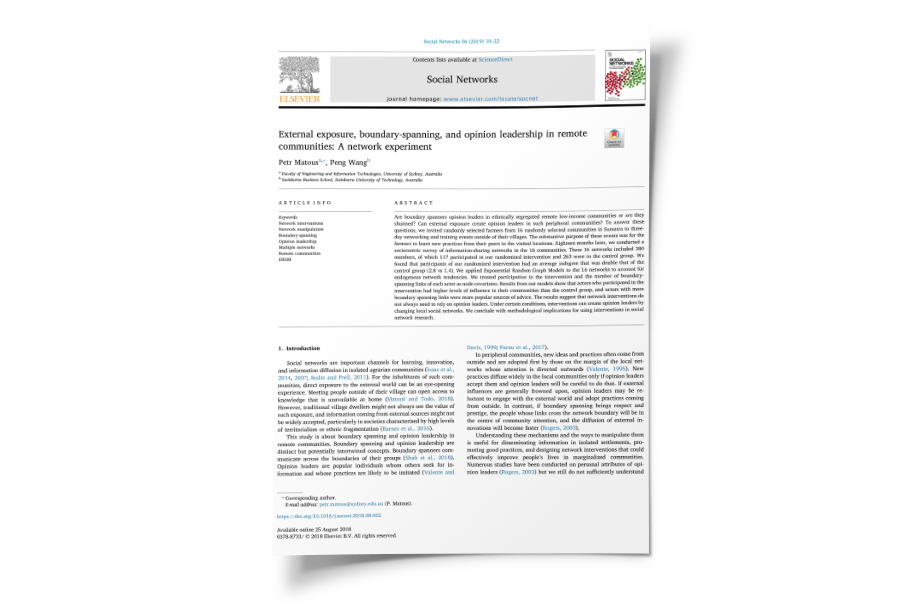External exposure, boundary-spanning, and opinion leadership in remote communities: A network experiment
Abstract
Are boundary spanners opinion leaders in ethnically segregated remote low-income communities or are they shunned? Can external exposure create opinion leaders in such peripheral communities? To answer these questions, we invited randomly selected farmers from 16 randomly selected communities in Sumatra to three-day networking and training events outside of their villages. The substantive purpose of these events was for the farmers to learn new practices from their peers in the visited locations. Eighteen months later, we conducted a sociocentric survey of information-sharing networks in the 16 communities. These 16 networks included 380 members, of which 117 participated in our randomized intervention and 263 were in the control group. We found that participants of our randomized intervention had an average indegree that was double that of the control group (2.8 vs 1.4). We applied Exponential Random Graph Models to the 16 networks to account for endogenous network tendencies. We treated participation in the intervention and the number of boundary-spanning links of each actor as node covariates. Results from our models show that actors who participated in the intervention had higher levels of influence in their communities than the control group, and actors with more boundary spanning links were more popular sources of advice. The results suggest that network interventions do not always need to rely on opinion leaders. Under certain conditions, interventions can create opinion leaders by changing local social networks. We conclude with methodological implications for using interventions in social network research.
Potential Industry Impact
- Analyses the role of community members’ positions in community networks for implementing development programs.
- Explains the effect of smallholder farmers’ engagement in development programs on their local social networks.
Academic Impact
- Illuminates causal relationships between individuals’ exposure to external programs, boundary spanning and opinion leadership.
- Advanced analytical methods employed simultaneously on multiple networks.

Authors:
Petr Matous, Peng Wang
Journal:
Social Networks, Volume 56 (January, 2019)
Read:
https://doi.org/10.1016/j.socnet.2018.08.002



Leave a Reply